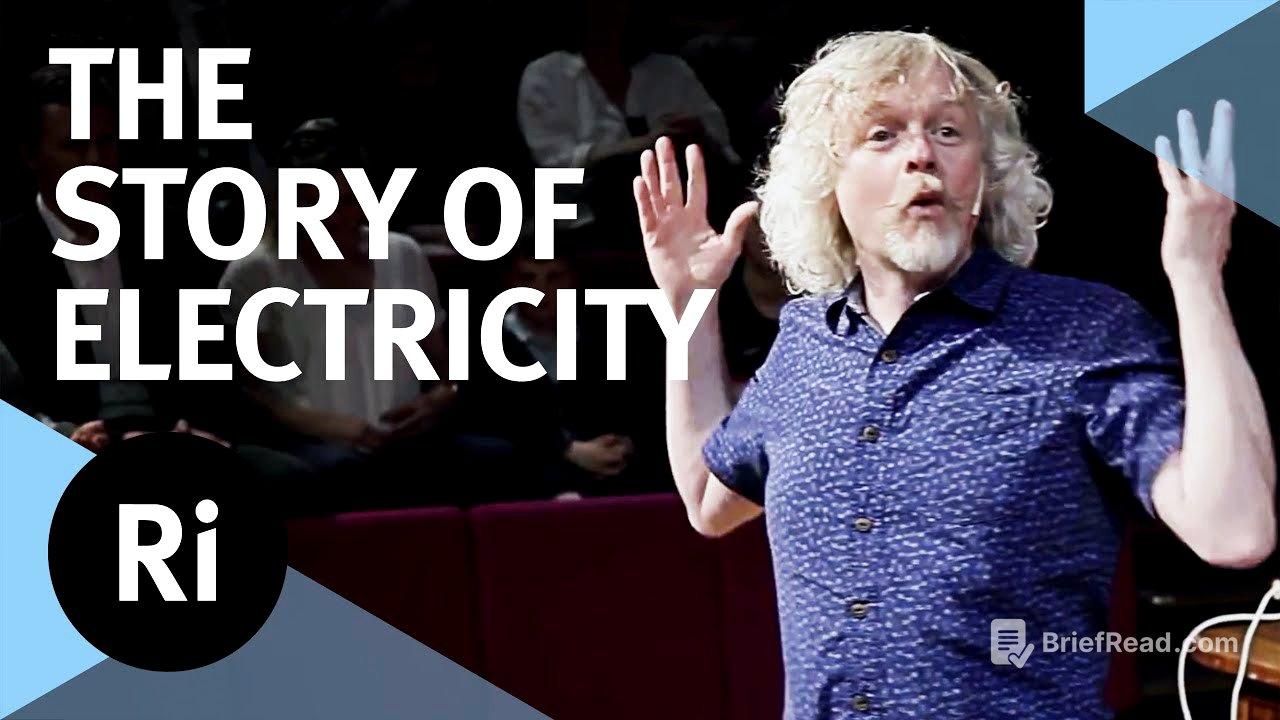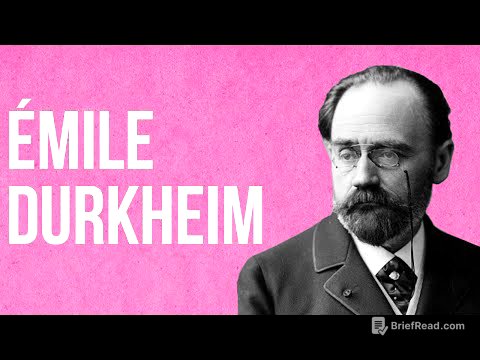TLDR;
This lecture explores the history and science of electricity, starting from ancient observations of static electricity to modern concerns about solar flares. It covers key experiments, inventions like the battery and electric motor, and demonstrations of electrical principles. The presentation balances historical context with engaging experiments, questioning whether we have truly "tamed" electricity.
- Static electricity and its historical context
- Key inventions: battery and electric motor
- The impact of solar flares on our electrical systems
- Demonstrations of electrical principles
Introduction [0:05]
The lecture begins by introducing the topic of electricity and questioning whether humanity has truly mastered it. The speaker emphasizes the importance of the Royal Institution as a center for science communication and highlights that many electrical discoveries occurred within its walls. Electricity is presented as a fundamental force that powers modern life, from lighting and communication to personal devices.
The Discovery of Static Electricity [2:51]
The history of electricity begins with Thales of Miletus, who observed that rubbing amber against a cat caused the amber to attract fur. The presenter uses a polypropylene pipe and fake fur to demonstrate static electricity, explaining that rubbing these materials together transfers electrons, creating a static charge. This charge can then be used to levitate a piece of space blanket, illustrating the principles of attraction and repulsion.
Electrical Soirées and Early Machines [8:15]
Centuries after Thales, little progress was made until Otto von Guericke invented a machine to generate static electricity, leading to electrical soirées. These events were a form of entertainment for the wealthy, who marveled at electrical experiments. The presenter demonstrates static electricity using a Wimshurst machine and a Van de Graaff generator, creating sparks and charging objects. He also shows how to make hair stand on end using static electricity and demonstrates the repulsion of charged pie dishes.
The Flying Boy Experiment [18:49]
The presenter discusses Stephen Gray, an 18th-century electrician who rose from poverty through science. Gray was known for the "flying boy" experiment, where he would suspend an orphan and charge him with static electricity, causing feathers to stick to the boy. Due to ethical concerns, the presenter recreates this experiment using a rubber chicken named Stretch, charging it with a Wimshurst machine and sticking feathers to it.
Voltage vs. Current [26:23]
The lecture addresses the critical difference between voltage and current, explaining that current is what kills, while voltage is the jolt. An experiment with volunteers is conducted to illustrate the concepts, using glow-in-the-dark balls to represent electrons and physical effort to represent voltage. Current is defined as the number of electrons flowing, while voltage is the amount of work required to move those electrons.
Lightning and Safety [32:47]
Benjamin Franklin's experiments with lightning are discussed, highlighting the danger and the proof that lightning is a form of electricity. The presenter explains that Franklin never performed the kite experiment himself, but others did, with fatal consequences. A volunteer participates in a role-play scenario to demonstrate what to do during a lightning storm, emphasizing the importance of protecting vital organs by assuming a specific posture.
Taming Electricity: Batteries, Motors, and Lights [41:38]
The lecture transitions to key inventions that allowed humanity to "tame" electricity, focusing on the work of Luigi Galvani and Alessandro Volta, who discovered chemical electricity. The presenter demonstrates how to create a simple battery using a lemon, copper, and zinc. Michael Faraday's invention of the electric motor is also highlighted, with a demonstration of a homopolar motor. Finally, James Bowman Lindsay's invention of the electric light bulb is showcased, with a demonstration using a carbon filament in a vacuum jar.
The Threat of Solar Flares [56:46]
The presentation shifts to a discussion of the potential threat posed by solar flares and coronal mass ejections (CMEs). The Carrington Event is mentioned as an example of a powerful CME that disrupted early telegraph systems. The presenter warns that a similar event today could knock out power grids and satellites, causing widespread disruption. While protective measures are in place, the lecture questions whether we have truly tamed electricity in the face of such natural forces.
Conclusion: Zap, Crackle, and Pop [1:00:26]
In homage to early electricians, the lecture concludes with a "pop"—a demonstration involving a balloon filled with hydrogen and oxygen. The presenter, wearing protective gear, ignites the mixture, creating a loud explosion. The demonstration serves as a reminder of the power and potential danger of electricity, leaving the audience with a sense of awe and respect for this fundamental force.







![If I Wanted To Become a Millionaire in 2025, This Is What I'd Do [FULL BLUEPRINT]](https://wm-img.halpindev.com/p-briefread_c-10_b-10/urlb/aHR0cDovL2ltZy55b3V0dWJlLmNvbS92aS9BTjJLcFJCc21SWS9ocWRlZmF1bHQuanBn.jpg)

